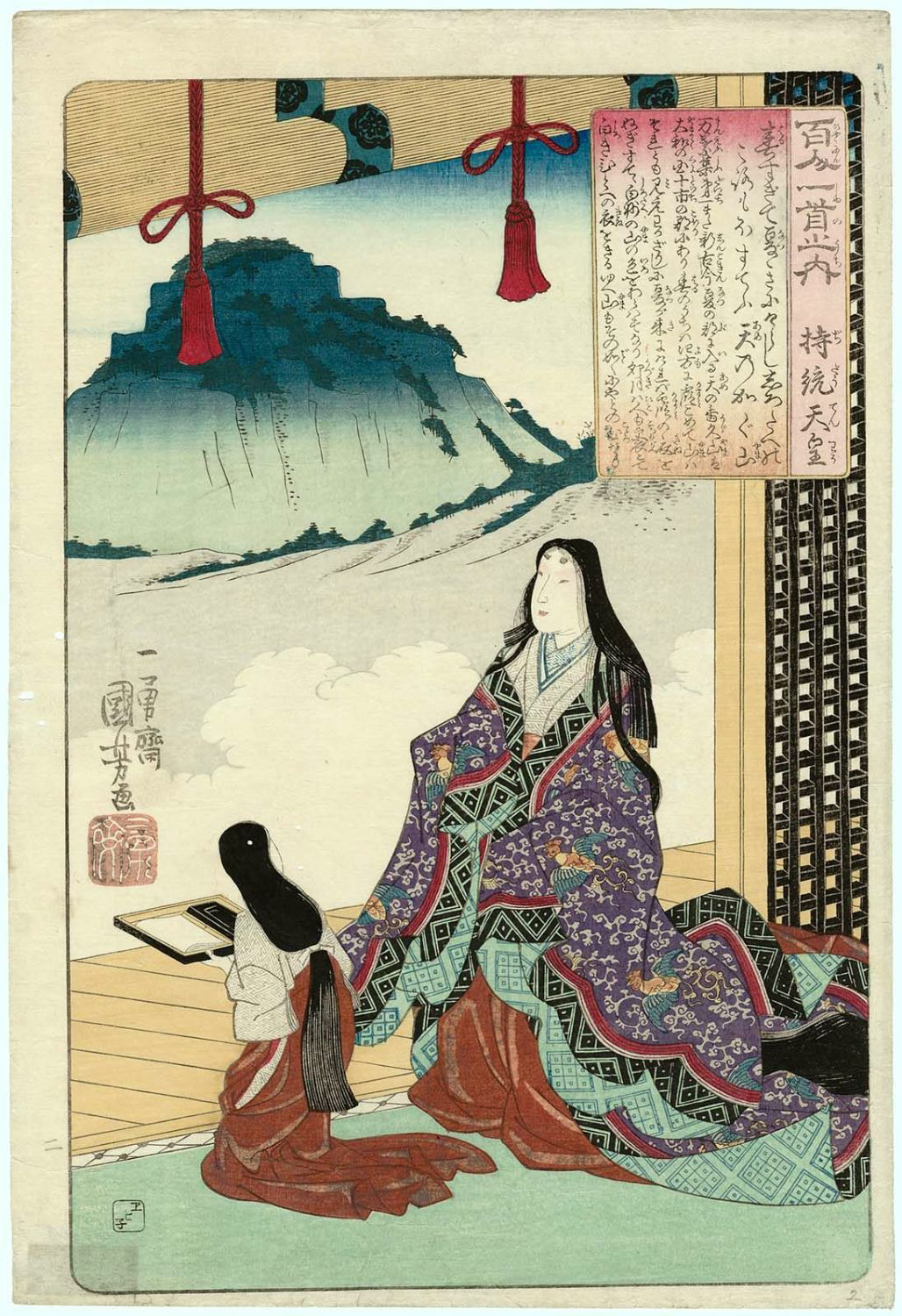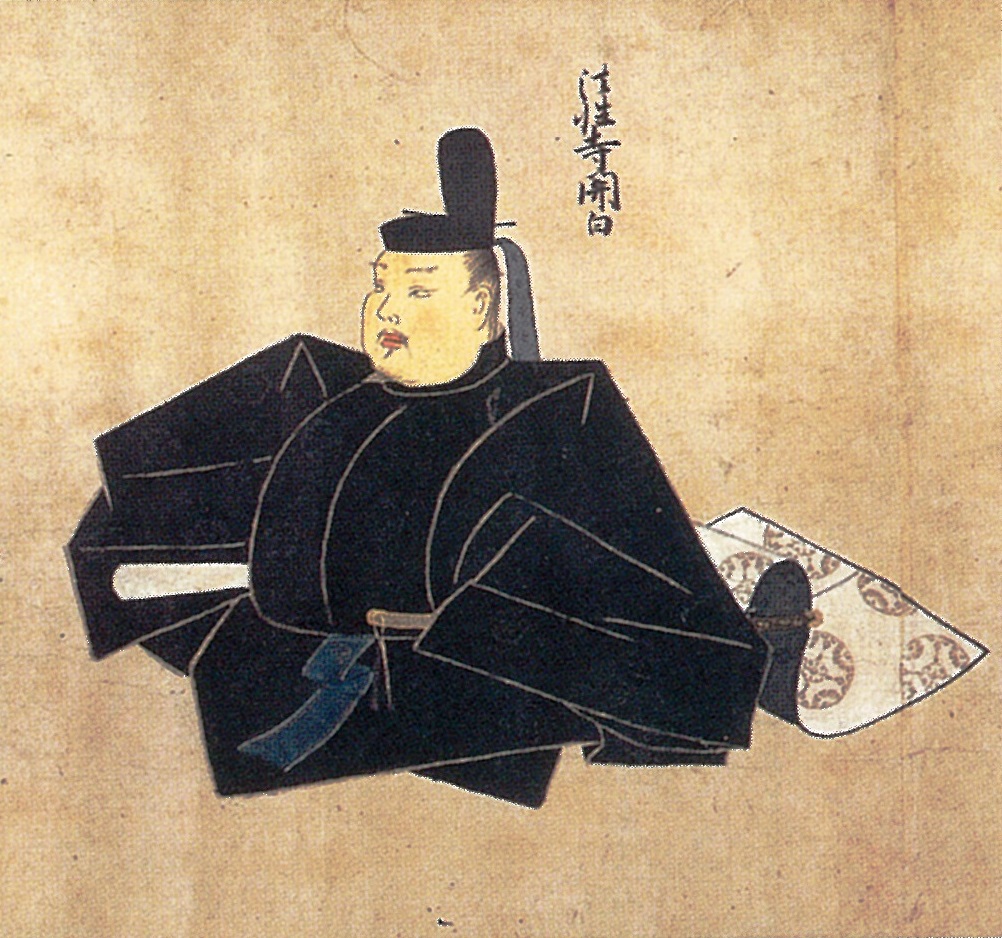|
Emperor Konoe
was the 76th emperor of Japan,Imperial Household Agency (''Kunaichō'') 近衛天皇 (76)/ref> according to the traditional order of succession. Konoe's reign spanned the years from 1142 through 1155. Genealogy Before his ascension to the Chrysanthemum Throne, his personal name (his ''imina'') was Narihito''-shinnō'' (体仁親王). He was also known as Tosihito''-shinnō''.Titsingh p. 186./ref> Emperor Konoe was the eighth son of Emperor Toba. His mother was Fujiwara no Nariko (1117–1160), the wife of Emperor Toba. *''Kōgō'': Fujiwara no Tashi (藤原多子), Tokudaiji Kin'yoshi‘s daughter and Fujiwara no Yorinaga’s adopted daughter. Later married Emperor Nijo and become Emperor Rokujo’s foster mother. *''Chūgū'': Fujiwara no Shimeko (藤原呈子) later Kujō-in (九条院), Fujiwara no Koremichi’s daughter and Fujiwara no Tadamichi’s adopted daughter. Events of Konoe's life Konoe was named heir shortly after he was born in 1139; and he was proc ... [...More Info...] [...Related Items...] OR: [Wikipedia] [Google] [Baidu] |
Emperor Of Japan
The emperor of Japan is the hereditary monarch and head of state of Japan. The emperor is defined by the Constitution of Japan as the symbol of the Japanese state and the unity of the Japanese people, his position deriving from "the will of the people with whom resides sovereign power". The Imperial Household Law governs the line of Succession to the Japanese throne, imperial succession. Pursuant to his constitutional role as a national symbol, and in accordance with rulings by the Supreme Court of Japan, the emperor is personally sovereign immunity, immune from prosecution. By virtue of his position as the head of the Imperial House of Japan, Imperial House, the emperor is also recognized as the head of the Shinto religion, which holds him to be the direct descendant of the sun goddess Amaterasu. According to tradition, the office of emperor was created in the 7th century BC, but the first historically verifiable emperors appear around the 5th or 6th centuries Anno Domini, AD ... [...More Info...] [...Related Items...] OR: [Wikipedia] [Google] [Baidu] |
Emperor Jomei
was the 34th emperor of Japan,Kunaichō 斉明天皇 (34)/ref> according to the traditional order of succession. Jomei's reign spanned the years from 629 through 641. Traditional narrative Before Jomei's ascension to the Chrysanthemum Throne, his personal name (''imina'') was or . As emperor, his name would have been ''Okinagatarashihi Hironuka Sumeramikoto'' (息長足日広額天皇). He was a grandson of Emperor Bidatsu, both paternally and maternally. His father was Prince Oshisakanohikohito-no-Ōe, his mother was Princess Nukate-hime, who was a younger sister of his father. Events in Jomei's reign He succeeded his great-aunt, Empress Suiko. Suiko did not make it clear who was to succeed her after her death. Before her death in 629, she called Tamura and Prince Shōtoku's son, Prince Yamashiro-no-Ōe, and gave some brief advice to each of them. After her death the court was divided into two factions, each supporting one of the princes for the throne. Soga no Emishi, t ... [...More Info...] [...Related Items...] OR: [Wikipedia] [Google] [Baidu] |
Cloistered Emperor
A is the term for a Japanese emperor who had abdicated and entered the Buddhist monastic community by receiving the '' Pravrajya'' rite. The term can also be shortened to . Cloistered emperors sometimes acted as ''Daijō Tennō'' (retired emperors), therefore maintaining effective power. This title was first assumed by Emperor Shōmu and was later used by many other emperors who "took the tonsure", signifying a decision to become a Buddhist monk.Ponsonby-Fane, Richard. (1963). ''Vicissitudes of Shinto'', p. 27. The last cloistered emperor was Emperor Reigen (r. 1663-1687) in the Edo period. List of retired emperors who became monks See also * Emperor Daijō *Cloistered rule was a form of government in Japan during the Heian period. In this bifurcated system, an emperor abdicated, but retained power and influence. Those retired emperors who withdrew to live in monasteries (''in'') continued to act in ways intended to ... Notes References * Ponsonby-Fane, Richard Arthur Br ... [...More Info...] [...Related Items...] OR: [Wikipedia] [Google] [Baidu] |
Emperor Fushimi
was the 92nd emperor of Japan, according to the traditional order of succession. His reign spanned the years from 1287 through 1298. Name Before his ascension to the Chrysanthemum Throne, his personal name (his ''imina'') was . Although the Roman-alphabet spelling of the name of this 13th-century emperor is the same as the personal name of the 20th century Emperor Shōwa, the kanji are different: * Emperor Fushimi, formerly Prince Hirohito (熈仁) * Emperor Shōwa, also known as Emperor Hirohito (裕仁) Genealogy He was the second son of Emperor Go-Fukakusa. They were from the Jimyōin-tō line. *Empress: Saionji (Fujiwara) Shoshi (西園寺(藤原)鏱子) later Eifukumon’In (永福門院), Saionji Sanekane‘s daughter *Consort: Tōin (Fujiwara) Sueko (洞院(藤原)季子) later Kenshinmon-in (顕親門院; 1265-1336), Tōin Saneo‘s daughter **First daughter: Imperial Princess Jushi (甝子内親王; 1287-1310) later Sakuheimon-in (朔平門院) **Third s ... [...More Info...] [...Related Items...] OR: [Wikipedia] [Google] [Baidu] |
Emperor Go-Toba
was the 82nd emperor of Japan, according to the traditional order of succession. His reign spanned the years from 1183 through 1198. This 12th-century sovereign was named after Emperor Toba, and ''go-'' (後), translates literally as "later"; and thus, he is sometimes called the "Later Emperor Toba". The Japanese word ''go'' has also been translated to mean the "second one"; and in some older sources, this emperor may be identified as "Toba the Second" or as "Toba II". Genealogy Before his ascension to the Chrysanthemum Throne, his personal name (his ''imina'') was . He was also known as Takanari''-shinnō'' He was the fourth son of Emperor Takakura, and thus grandson of Emperor Go-Shirakawa. His mother was Bōmon ''Shokushi'' (坊門殖子) (Empress Dowager Shichijō-in, 七条院), daughter of Bōmon Nobutaka (坊門信隆) of the Fujiwara clan. Consorts and children * Empress (''chūgū''): '' Fujiwara no Ninshi''/Takako (藤原任子) later Gishūmon-in (宜秋門院), ... [...More Info...] [...Related Items...] OR: [Wikipedia] [Google] [Baidu] |
Emperor Yōzei
was the 57th emperor of Japan,Imperial Household Agency (''Kunaichō'') 陽成天皇 (57)/ref> according to the traditional order of succession. Yōzei's reign spanned the years from 876 through 884. Traditional narrative Before his ascension to the Chrysanthemum Throne, his personal name (his ''imina'') was Sadaakira ''Shinnō'' (貞明親王). Yōzei was the oldest son of Emperor Seiwa. His mother was the Empress Fujiwara no Takaiko, who was also known after Seiwa's abdication as the Nijō empress. Yōzei's mother was the sister of Fujiwara no Mototsune, who would figure prominently in the young emperor's life.Titsingh, p. 121. In ancient Japan, there were four noble clans, the ''Gempeitōkitsu'' (源平藤橘). One of these clans, the Minamoto clan (源氏) are also known as Genji, and of these, the ''Yōzei Genji'' (陽成源氏) are descended from the 57th emperor Yōzei. Yōzei had nine Imperial children, born after he had abdicated.Brown, p. 288. He is said to h ... [...More Info...] [...Related Items...] OR: [Wikipedia] [Google] [Baidu] |
Empress Jitō
was the 41st emperor of Japan, monarch of Japan,Imperial Household Agency (''Kunaichō'') 持統天皇 (41)/ref> according to the traditional List of Emperors of Japan, order of succession. Jitō's reign spanned the years from Jitō period, 686 through 697.Titsingh, Isaac. (1834). In the history of Japan, Jitō was the third of eight women to take on the role of Josei Tennō, empress regnant. The two female monarchs before Jitō were Empress Suiko, Suiko and Empress Kōgyoku, Kōgyoku/Empress Saimei, Saimei. The five women sovereigns reigning after Jitō were Empress Genmei, Genmei, Empress Genshō, Genshō, Empress Kōken, Kōken/Empress Shōtoku, Shōtoku, Empress Meishō, Meishō, and Empress Go-Sakuramachi, Go-Sakuramachi. Traditional narrative Empress Jitō was the daughter of Emperor Tenji. Her mother was Ochi-no-Iratsume, the daughter of Minister Ō-omi Soga no Yamada-no Ishikawa Maro. She was the wife of Tenji's full brother Emperor Tenmu, whom she succeeded on the ... [...More Info...] [...Related Items...] OR: [Wikipedia] [Google] [Baidu] |
Emperor Tenji
, known first as and later as until his accession, was the 38th emperor of Japan who reigned from 668 to 671. He was the son of Emperor Jomei and Empress Kōgyoku (Empress Saimei), and his children included Empress Jitō, Empress Genmei, and Emperor Kōbun. In 645, Tenji and Fujiwara no Kamatari defeated Soga no Emishi and Iruka. He established a new government and carried out political reforms. He then assumed real political power as the crown prince of both the Kōtoku and Saimei Emperors. Despite the death of Emperor Saimei, he did not accede to the throne for seven years, and came to the throne after the relocation of the capital to Ōmi in 668. He created Japan's first family register, the ''Kōgo Nenjaku'', and the first code of law, the Ōmi Code. Traditional narrative He was the son of Emperor Jomei, but was preceded as ruler by his mother Empress Saimei. Prior to his accession, he was known as . Events of Tenji's life As prince, Naka no Ōe played a cru ... [...More Info...] [...Related Items...] OR: [Wikipedia] [Google] [Baidu] |
Eiji
Eiji is a common masculine Japanese given name. Written forms Eiji can be written using different kanji characters and can mean: *, "prosperity, peace" *, "great, peace" *, "great, second" *, "eternity, next" The name can also be written in hiragana () or katakana (). In Japanese history the Eiji era (, "eternal peace"), from 1141 to 1142, follows the Hōen era and precedes the Kōji era. People with the name *, Japanese actor *, Japanese designer and video game director *, Japanese professional wrestler *, Japanese film actor *, Japanese shogi player *, Japanese cartoonist, painter, illustrator, and haiga artist *, Japanese football goalkeeper *, Japanese industrial designer *, Japanese professional mixed martial artist *, Japanese voice actor *, Japanese boxer *, Japanese film actor *, Japanese conductor *, Japanese businessman *, Japanese volleyball player *, Japanese tennis player *, Japanese footballer *, Japanese chairman of Toyota Motor Corporation *, Japanese spec ... [...More Info...] [...Related Items...] OR: [Wikipedia] [Google] [Baidu] |
Fujiwara No Tadamichi
was the eldest son of the Japanese regent ('' Kampaku'') Fujiwara no Tadazane and a member of the politically powerful Fujiwara clan. He was the father of Fujiwara no Kanefusa and Jien. In the Hōgen Rebellion of 1156, Tadamichi sided with the Emperor Go-Shirakawa, while his brother Fujiwara no Yorinaga sided with Emperor Sutoku. In 1162, he ordained as a Buddhist monk and took the Dharma name Enkan (円観). Marriage and Children Parents *Father: Fujiwara no Tadazane (藤原 忠実, 1078 – 1162) *Mother: Minamoto no Moroko (源師子), daughter of Minamoto no Akifusa (源顕房) Consort and issue: * Wife: Fujiwara no Soshi (藤原宗子, 1190 – 1155), daughter of Fujiwara no Munemichi (藤原宗通) ** Fujiwara no Kiyoko (藤原 聖子; 1122–1182), Wife of Emperor Sutoku, first daughter ** ''Third son'' (d.1127) * Wife: Minamoto no Nobuko (源信子), daughter of Minamoto no Norinobu (源国信) ** Konoe Motozane (近衛 基実, 1143 – August 23, 1166), fourth son ... [...More Info...] [...Related Items...] OR: [Wikipedia] [Google] [Baidu] |


